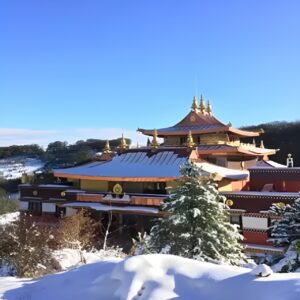

Our Spiritual Director
Dzongsar Jamyang Khyentse Rinpoche
Filmmaker? Photographer? Football fan? In a world where labels matter, finding just one that captures the essence of Dzongsar Jamyang Khyentse Rinpoche might, on the face of it, seem an impossible task. But actually, it couldn’t be simpler. First and foremost, Khyentse Rinpoche is and always will be a buddhist teacher, and all his other activities are merely creative responses to this central aspiration.

































